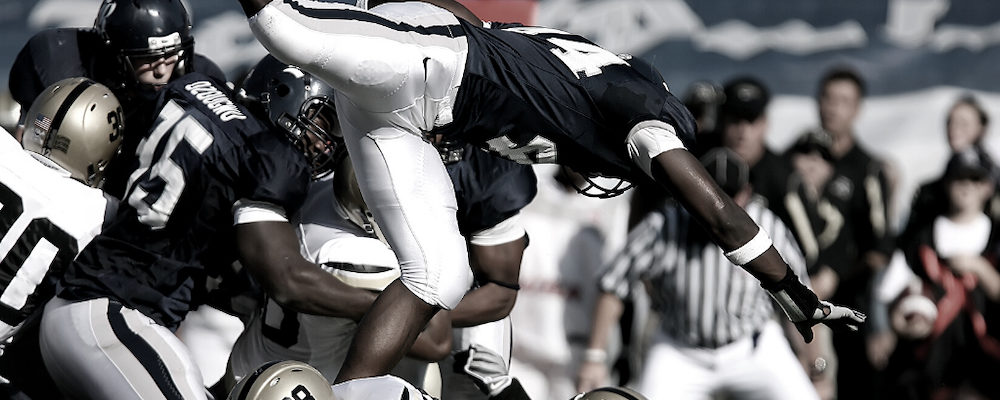The Super Bowl and Data Science: Changing the NFL with the Power of Machine Learning


Super Bowl LIV came and went. The San Francisco 49ers vs the Kansas City Chiefs. Personally, being from the The Bay, I was rooting for the 49ers, but you can’t always get what you want.
Whoever came out on top, though, we were all looking forward to a great game full of fantastic plays and the kind of gridiron tenacity where players lay it all on the line to move the ball another yard or two toward the end zone – all in the face of an opponent determined to push them back.
Yes, football is a game of grit – which is why we love to watch it. But bodies are fragile – even the bodies of 250-pound linebackers. Injuries in the NFL happen every game, concussion being one of the most common and most pernicious.
So, one important question is how can a game that mixes elite-level athleticism with full-force, bone-crunching take-downs reduce the risks of injuries – concussion or otherwise?
The answer may be surprising: data science and machine learning.
John Miller and the Kaggle Competition
Data, of course, is nothing new to the NFL. For years now, we’ve seen coaches consulting their tablets or scanning data-packed laminated play sheets to somehow squeak out an advantage. Football, like many professional sports, has moved to the digitized big data world. Sensors, cameras, coaches, wearables, etc. are all collecting more and more data.
But insights from data can be used for other purposes – such as saving the brains of players on the field.
Take the example of John Miller, a data scientist here at H2O. John has won two Kaggle competitions – in which data scientists compete to produce the models that glean insight from data provided by sponsoring organizations.
In 2018, John won a Kaggle competition sponsored by the NFL to look at concussions related to punt plays (which have historically posed the highest risk to players). Starting with data on the types of collisions that occurred, where they occurred, and the players involved, John followed a methodology that enabled him to understand the problem, detect patterns in the data, and propose rule changes to reduce the risk of concussion.
Insight that changed the NFL
For all the plays that resulted in concussions, John plotted them out on a flow chart, created animations based on the videos of the same plays, and synthesized the various contact situations into scenarios with the highest potential for harm. [1]
Based on this analysis, he found that offensive linemen and gunners are at risk of harmful blindside blocks as defensive players make their way over and back to protect the returner. According to rules in place at the time, prohibited contact did not include forcible contact below the neck as long as it was not with the helmet and the blocker didn’t illegally launch.
With insight from his analysis, John recommends expanding the definition of prohibited contact for punt plays to include forcible contact to any part of a player’s body, provided he meets the criteria for a defenseless player. [2] For the 2019 season, the NFL accepted John’s recommendations.
In 2019, I should note, John won a second Kaggle competition. This time he focused on reducing lower limb injuries by looking at natural vs. synthetic turf, player acceleration, and game environment.
Will there be further changes in the NFL based on new insight from John? Stay tuned.
The power of machine learning for all of us
Not all of us are top athletes and coaches. Not all of us play on the national stage. For most of us, running a punt return into the end zone is something we only dream about.
But many of us do help run businesses that could benefit from the kind of machine learning insight that is helping the NFL to improve today’s game. AI and machine learning have become pervasive across most industries.
Machine learning, in fact, has wide applicability. If it can help reduce concussions in the NFL, it can help businesses identify customers who are most likely to buy, which customers might churn, pinpoint the best areas for market expansion, or help identify potential fraud. These are just a few examples.
Whether it’s applied to sports or business, the principles of machine learning are the same. And learning these principles is now critical for business success.
Want to learn more?
Attend our upcoming webinar on February 13th hosted by John Miller himself, titled “Winning Solutions for Analytics: Reducing Lower Body Injuries in the NFL.” John will use his NFL example as a way to explore the use and value of machine learning for a business audience.
In this webinar you’ll learn:
- Methods to identify and prioritize opportunities for analysis
- How to apply machine learning in the context of an analytics problem
- Tips on communicating with a business audience
- Techniques to optimize the readability of Jupyter notebooks
As you watched this year’s Super Bowl, did you think about how data insight was helping to drive success in the game? And have you thought about how data insight can help your organization succeed?








